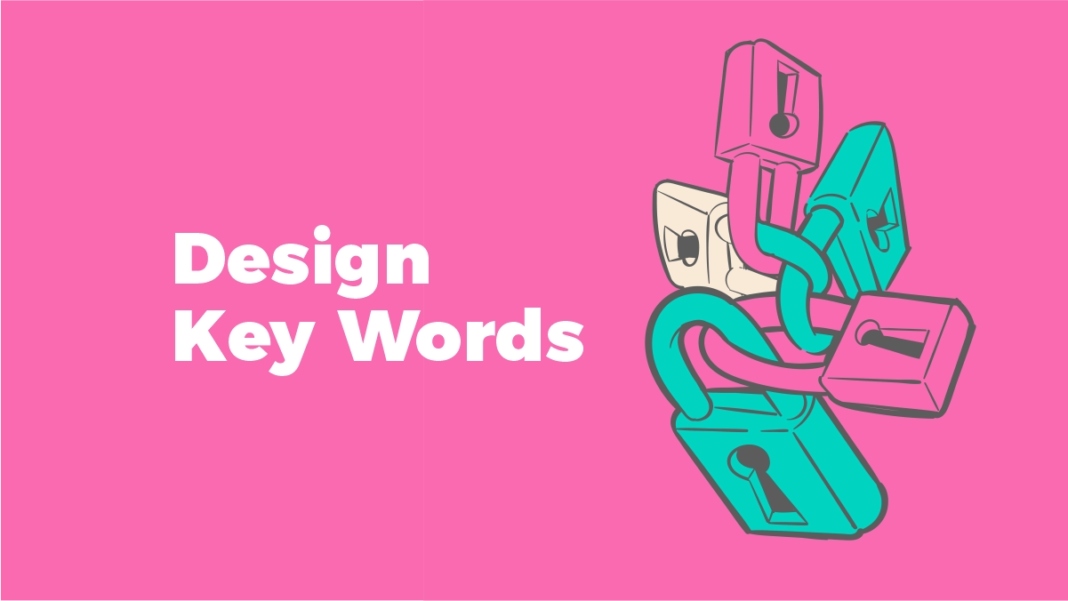In the ever-evolving world of design, mastering the language of creativity is just as important as mastering the tools. Whether you’re a graphic designer, UX/UI specialist, or product designer, understanding design key words can dramatically improve your communication, workflow, and creative output. In this article, we’ll explore 33 essential terms every designer should know, backed by insights from trusted 2024-2025 sources and design education leaders.
Why Design Vocabulary Matters in 2025
Design is more than aesthetics-it’s a strategic discipline that blends psychology, technology, and communication. According to the Interaction Design Foundation, design education today emphasizes critical thinking, empathy, and problem-solving, all of which are rooted in a shared vocabulary. Without a solid grasp of design terminology, even the most talented creatives can struggle to articulate their ideas or collaborate effectively. [interactio…design.org]
Section 1: Foundational Design Key Words for Visual Communication
1. Alignment
The arrangement of elements in relation to each other or the canvas. Crucial for visual harmony.
2. Hierarchy
Organizing elements to guide the viewer’s attention, often using size, color, or placement.
3. Contrast
The difference between elements (color, shape, texture) to create emphasis and clarity.
4. White Space
Also called negative space; the empty areas that help designs breathe and improve readability.
5. Composition
The overall layout and structure of visual elements in a design.
These terms are foundational across disciplines, from branding to UI design. Adobe’s 2025 glossary highlights how these words form the backbone of effective design communication. [adobe.com]
Section 2: Typography and Color Theory Essentials
6. Kerning
Adjusting space between individual characters for improved legibility.
7. Leading
Vertical spacing between lines of text.
8. Ascender/Descender
Parts of letters that extend above or below the baseline.
9. Serif/Sans Serif
Font styles with or without decorative strokes.
10. Analogous Colors
Colors adjacent on the color wheel, used for harmonious palettes.
11. CMYK vs RGB
Color modes for print (CMYK) and digital (RGB) design.
Understanding typography and color theory is vital for branding and user experience. As noted by Shillington Education, these terms help designers make informed aesthetic decisions. [shillingto…cation.com]
Section 3: UX/UI Design Key Words for 2025
12. Accessibility
Designing for users of all abilities, a growing priority in 2025. [uxdesignin…titute.com]
13. Dark Mode / Low Light UI
Interface styles that reduce eye strain and improve readability in low-light environments. [kreability.com]
14. Bento Grid
A modular layout inspired by Japanese bento boxes, enhancing content hierarchy. [kreability.com]
15. Microinteractions
Small, functional animations that guide users and provide feedback.
16. Responsive Design
Design that adapts to different screen sizes and devices.
17. Neumorphism
A soft, extruded visual style combining skeuomorphism and flat design. [userguiding.com]
18. Kinetic Typography
Animated text used to convey emotion and guide attention. [kreability.com]
19. AI-Driven Personalization
Interfaces that adapt in real-time based on user behavior. [bootstrapdash.com]
These terms reflect the latest UX/UI trends and are essential for staying competitive in digital design.
Section 4: Advanced and Emerging Design Key Words
20. Design Thinking
A non-linear, user-centered approach to problem-solving.
21. Empathy Mapping
Visualizing user emotions and behaviors to inform design decisions.
22. Iteration
The process of refining a design through repeated cycles.
23. Wireframe
A basic layout of a digital interface, used in early design stages.
24. Prototype
An interactive model used to test functionality and user flow.
25. Usability Testing
Evaluating a design by observing real users interacting with it.
26. Real-World Data Design
Using actual user data to inform design decisions, as emphasized by the FDA-NIH MoRE glossary. [osp.od.nih.gov]
27. Modular Design
Creating reusable components for scalable design systems.
28. Ethical Design
Designing with consideration for privacy, inclusivity, and sustainability. [uxdesignin…titute.com]
29. TRE (Trusted Research Environment)
Secure frameworks for ethical design research. [infonetica.net]
30. Blur & Grain Effects
Stylistic touches that add depth and realism to digital interfaces. [kreability.com]
31. AR/VR Interfaces
Designing for immersive environments, now mainstream in retail and education. [arounda.agency]
32. Interaction Design
Designing interactive digital experiences that respond to user input.
33. Brand System
A cohesive set of design elements that define a brand’s identity.
These advanced terms are shaping the future of design education and practice, as discussed by experts at MIT and Virginia Tech. [loft.design]
People Also Asked
What are design key words and why are they important?
Design key words are essential terms used in creative disciplines to describe visual, functional, and strategic elements. They help designers communicate ideas clearly and collaborate effectively.
How do design key words improve your workflow?
By mastering design vocabulary, you streamline communication, reduce misunderstandings, and make faster, more informed decisions during the design process.
What are the most important design key words for beginners?
Beginners should focus on terms like alignment, hierarchy, contrast, typography, and color theory to build a strong foundation.
Are design key words different in UX/UI vs graphic design?
Yes. UX/UI design includes terms like accessibility, wireframes, and microinteractions, while graphic design focuses more on composition, typography, and branding.
Conclusion: Speak the Language of Design
Mastering these 33 design key words will not only make you a better designer-it will make you a better communicator, collaborator, and strategist. As design continues to evolve in 2025, staying fluent in its vocabulary is essential.
“Design is not just what it looks like and feels like. Design is how it works.”
– Steve Jobs


